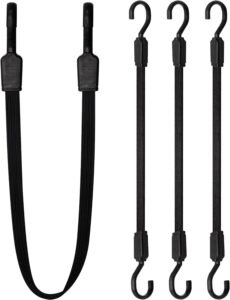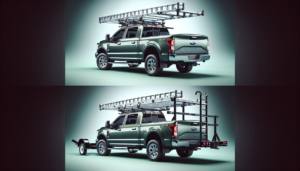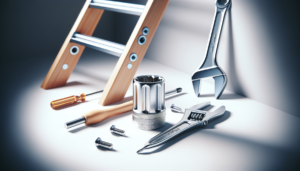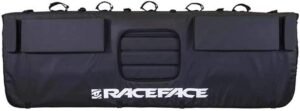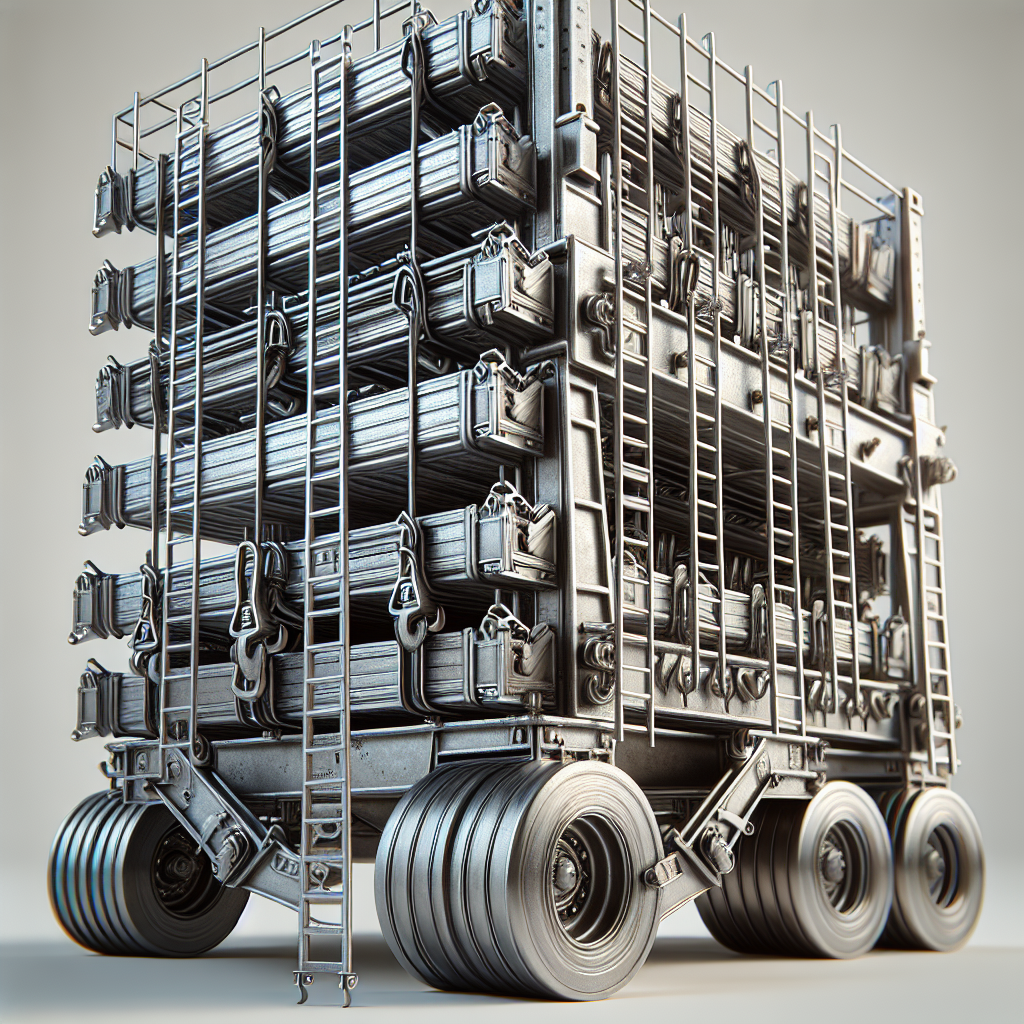
In the world of ladder racks, durability is key. But have you ever wondered what materials are commonly used to make these essential accessories? From traditional steel to lightweight aluminum, there are a variety of options to choose from. In this article, we will explore the different materials commonly used, and uncover which one reigns supreme in terms of durability. So, whether you’re a handyman looking to upgrade your ladder rack or simply curious about the construction behind these versatile tools, read on to discover the answers you’ve been seeking.
Ladder Rack Materials
Ladder racks are an essential tool for professionals needing to transport their ladders safely and securely. They come in a variety of materials, each with its own advantages and drawbacks. In this article, we will explore the most commonly used ladder rack materials and discuss which one is the most durable.
Steel
Steel is a popular choice for ladder rack construction due to its strength and durability. Steel ladder racks are known for their ability to withstand heavy loads and tough conditions. They are usually made from tubular steel, which offers maximum strength while minimizing weight. Additionally, steel racks often feature a powder coat finish, providing an extra layer of protection against rust and corrosion.
Aluminum
Aluminum ladder racks are lightweight yet sturdy, making them an attractive option for many professionals. They offer a good balance between strength and weight, allowing for easy installation and removal. Aluminum racks are also highly resistant to rust and corrosion, which is beneficial for those working in humid or coastal areas. However, it’s important to note that aluminum racks may not have the same load-bearing capacity as their steel counterparts.
Wood
While not as common as steel or aluminum, wood ladder racks still have their benefits. Wood racks offer a traditional and aesthetically pleasing look, making them a favorite among some contractors. They are generally more affordable compared to other materials and can be easily customized to fit specific needs. However, wood racks are susceptible to weather damage, rot, and insect infestation, which can significantly affect their durability.
Composite
Composite ladder racks are relatively new to the market and are gaining popularity due to their unique blend of strength and lightness. Made from a combination of different materials, such as fiberglass and resin, composite racks offer excellent durability without the added weight of steel or aluminum. They are also resistant to corrosion and weather damage, making them a reliable choice for outdoor use. However, composite racks can be more expensive compared to other options.
Fiberglass
Fiberglass ladder racks are known for their exceptional strength and durability. They are lightweight, yet can withstand heavy loads without bending or warping. Fiberglass racks are also resistant to corrosion, making them a suitable choice for those working in harsh environments. However, they may not be as widely available as other materials and can be more expensive.
Factors Affecting Durability
When considering the durability of ladder racks, several factors come into play. Understanding these factors can help you make an informed decision when choosing the most durable ladder rack for your needs.
Load Capacity
Load capacity refers to the maximum weight a ladder rack can safely carry. The higher the load capacity, the more durable the rack is likely to be. Steel ladder racks generally have higher load capacities compared to other materials, making them suitable for heavy-duty applications. However, it’s important to choose a ladder rack that matches your specific load requirements to ensure safety and longevity.
Weather Resistance
Ladder racks are exposed to various weather conditions, including rain, snow, and UV rays. The material’s ability to withstand these elements affects its durability. Steel and aluminum ladder racks are generally weather-resistant, thanks to their powder coat finishes or natural properties. Composite and fiberglass racks are also known for their excellent weather resistance, making them suitable for outdoor use.
Corrosion Resistance
Corrosion can significantly impact the durability of ladder racks, especially for those used in corrosive environments, such as coastal areas or regions with high humidity. Steel and aluminum racks are often coated or treated to resist corrosion, ensuring their longevity. Composite and fiberglass racks are naturally resistant to corrosion, offering added durability in harsh conditions.
Maintenance
Regular maintenance plays a vital role in extending the lifespan of ladder racks. Some materials may require more maintenance than others. Steel and wood racks may need regular cleaning, touch-ups, and rust prevention measures. Aluminum racks typically require minimal maintenance due to their natural resistance to corrosion. Composite and fiberglass racks are low-maintenance options, requiring only occasional cleaning to retain their durability.
Weight
The weight of a ladder rack can affect its durability and the ease of installation and removal. Heavier racks are often associated with greater durability, but they can also be more challenging to handle. Steel racks tend to be heavier, while aluminum, composite, and fiberglass racks offer lightweight alternatives without compromising strength. Consider the weight of the ladder rack in relation to your individual needs and preferences.
Comparing Durability
Now that we have explored the characteristics and factors affecting the durability of ladder racks, let’s compare how different materials stack up against each other.
Steel vs Aluminum
Steel ladder racks are generally more durable than aluminum racks due to their higher load capacities and overall strength. However, aluminum racks offer a better weight-to-strength ratio and superior resistance to corrosion. Depending on the specific load requirements and working conditions, both materials can be excellent choices in terms of durability.
Steel vs Wood
Steel ladder racks far surpass wood racks in terms of durability. Wood is susceptible to rot, weather damage, and insect infestation, making it less durable in the long run. Steel racks provide superior strength, weather resistance, and longevity, making them the better option for those seeking a durable solution.
Steel vs Composite
Steel and composite ladder racks both offer exceptional durability. Steel racks excel in load capacity and strength, while composite racks provide a lightweight yet strong alternative. The choice between the two ultimately depends on the specific needs and preferences of the user.
Steel vs Fiberglass
Steel and fiberglass ladder racks are both highly durable materials. Steel racks are known for their heavy-duty capabilities, while fiberglass racks offer lightweight durability. Considering factors such as load requirements, weather conditions, and budget can help determine the most suitable material for your needs.
Aluminum vs Wood
When comparing aluminum and wood ladder racks, aluminum has the upper hand in terms of durability. Wood racks are prone to weather damage and rot, which can significantly reduce their lifespan. Aluminum racks offer better resistance to corrosion and often have higher load capacities, making them the more durable choice.



